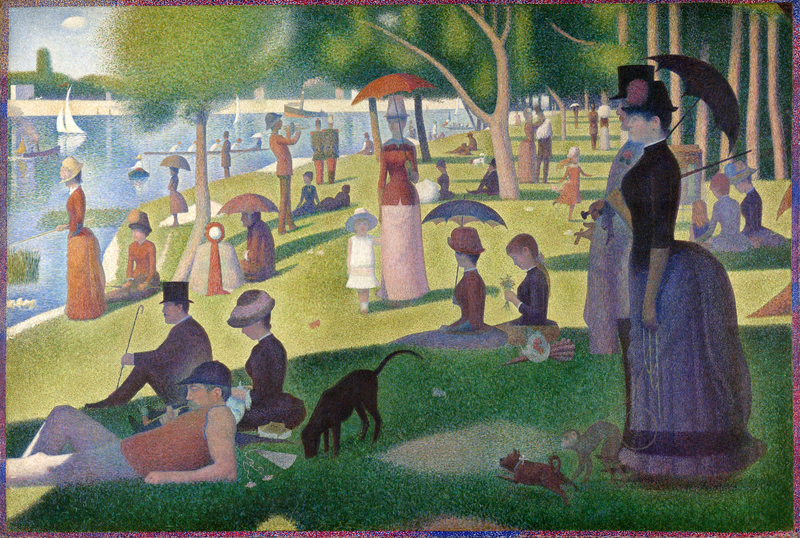Georges Seurat was born on December 2, 1859 in Paris. He was a post-impressionist painter and is best known for having developed the pointillist technique, which he did by working together with Paul Signac.
Perhaps his most famous work is A Sunday on La Grande Jatte, which depicts members of each social class enjoying various activities in one park scene. Seurat spent two years in the park sketching the people he saw there, preparing to create the large (ten foot wide) painting. The painting itself is an example of pointillism; it is made up of many colored dots, which the viewer’s eye must blend, but which allow for subtle enhancements of unexpected color. Seurat believed that color itself could be an expression of emotion; for instance, warm colors could express joy, cool ones, sadness. He said, “Art is Harmony. Harmony is the analogy of the contrary and of similar elements of tone, of colour and of line. In tone, lighter against darker. In colour, the complementary, red-green, orange-blue, yellow-violet. In line, those that form a right-angle. The frame is in a harmony that opposes those of the tones, colours and lines of the picture, these aspects are considered according to their dominance and under the influence of light, in gay, calm or sad combinations.”^1 Though it may seem contradictory, Seurat also lent his art a mathematic approach; while it was infused with color and in that way emotion, it was also very structured and even visually stiff.
Seurat was influential not only to artists embracing the pointillist technique but also those in the Cubist movement.
^1 ”Art of the 20th Century”, Karl Ruhrberg. Books.google.com. Retrieved 2 December 2016.
